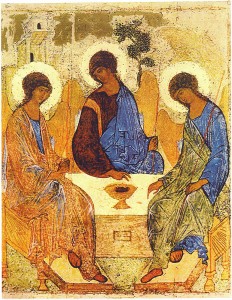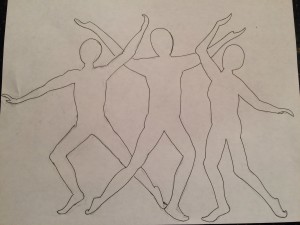In the beginning when God created the heavens and the earth,
the earth was a formless void and darkness covered the face of the deep,
while a wind from God swept over the face of the waters.
Then God said, “Let there be light”; and there was light.”
– Genesis 1:1-3
John came as a witness to testify to the light, so that all might believe through him.
He himself was not the light, but he came to testify to the light.
The true light, which enlightens everyone, was coming into the world.
– John 1:7-9
New Year’s Greetings!
The calendar turns and once more we’re at a place of new beginning. It’s true, the challenges, concerns, and crises we faced in 2017 within our families, communities, and world are not magically wiped away as the New Year begins. Yet HOPE is dawning for the Word-Become-Flesh has pitched his tent among us. The “true light,” has come into the world, and promises to companion us come hell or high water (or “bomb cyclone” for that matter!), of this we can be confident.
Our first worship service in this New Year marks the Baptism of our Lord by John in the Jordan, and this year, we’ll welcome a new brother—Mark Gilbert—into the Body of Christ during worship. Water—the most essential and lifegiving element on this planet home—serves as a reminder of the ever-present blessing of the one whose Wind/Spirit/Breathe brooded over the face of primordial waters, calling light and life into being. In baptism God’s promise moves IN, WITH, and UNDER the water—infusing it with grace and spirit, calling us to a new life oriented around our Lord and his way of being in the world. As we begin the year recalling Christ’s baptism and remembering our own, we ground ourselves in our identity and purpose as sisters and brothers in Christ. Let’s make this baptismal identity the lens through which we look at our families, communities and world.
And speaking of our baptismal vocation, on page two below you’ll read about a proposal for Peace to become an Advocating Congregation affiliated with Faith Action Network (FAN). Plenty of energy and conversation has gone into the process that gave birth to this proposal. Please read the proposal carefully and feel free to approach council members with any questions you may have. The proposal will be on the agenda for our January 28 annual meeting.
January always begins with a flurry as annual reports are assembled and preparations are made for the unfolding year. The NOMINATING COMMITTEE is hard at work looking for people among us who are willing to serve as Council leaders. A shortage of candidates last year compounds the need for even more council members to be elected this year. For congregations to remain strong and healthy, good leaders are required. If approached, I hope you’ll consider donning the mantle. If you want a preview of the council’s proposal for FUNDING OUR MISSION in 2018, plan to attend the budget forum on January 14th, and to participate in the Annual Meeting on January 28th.
With you on the Way,
Pastor Erik



 The opening stanza of Brian Wren’s hymn on the Trinity reads:
The opening stanza of Brian Wren’s hymn on the Trinity reads:

